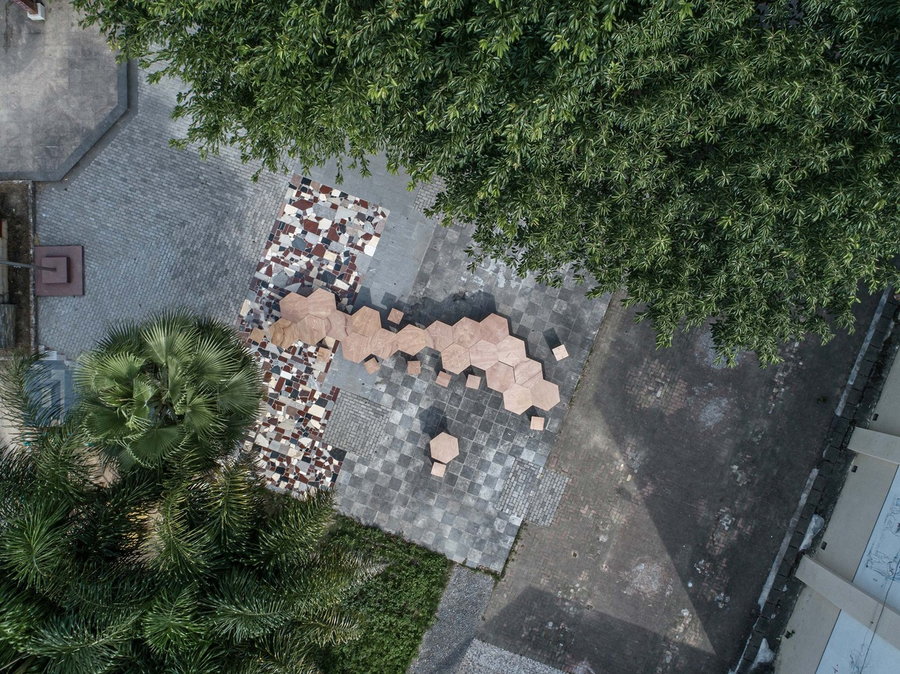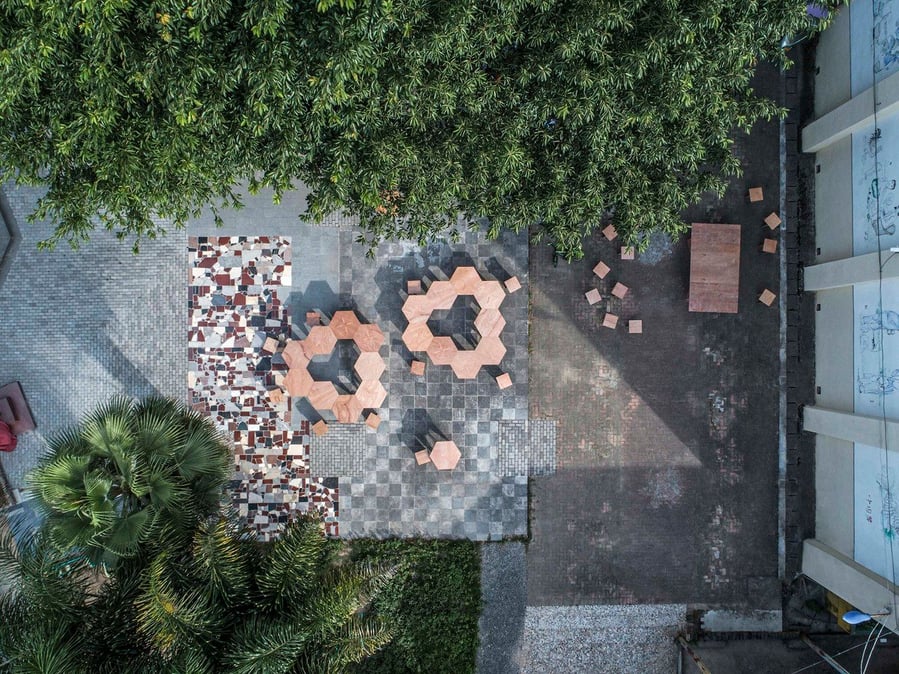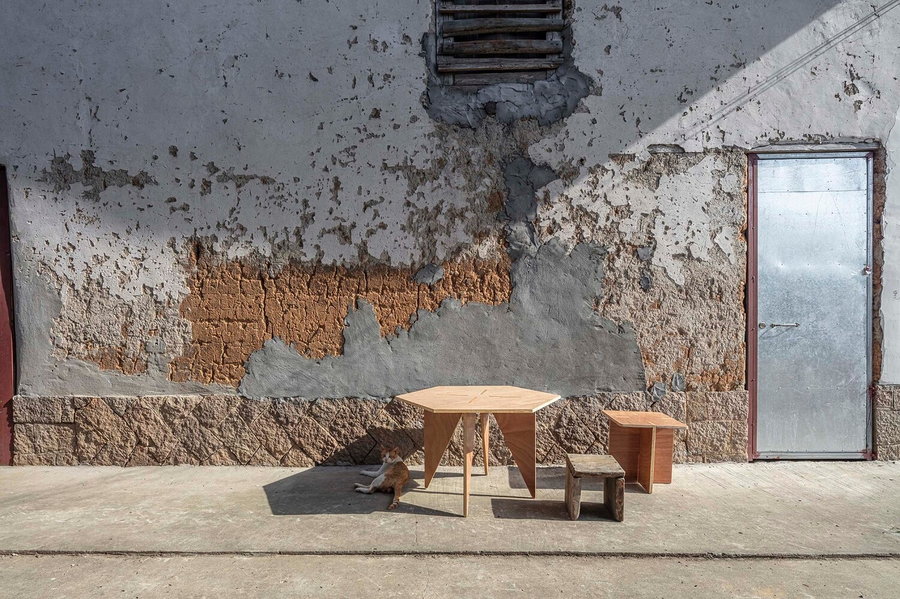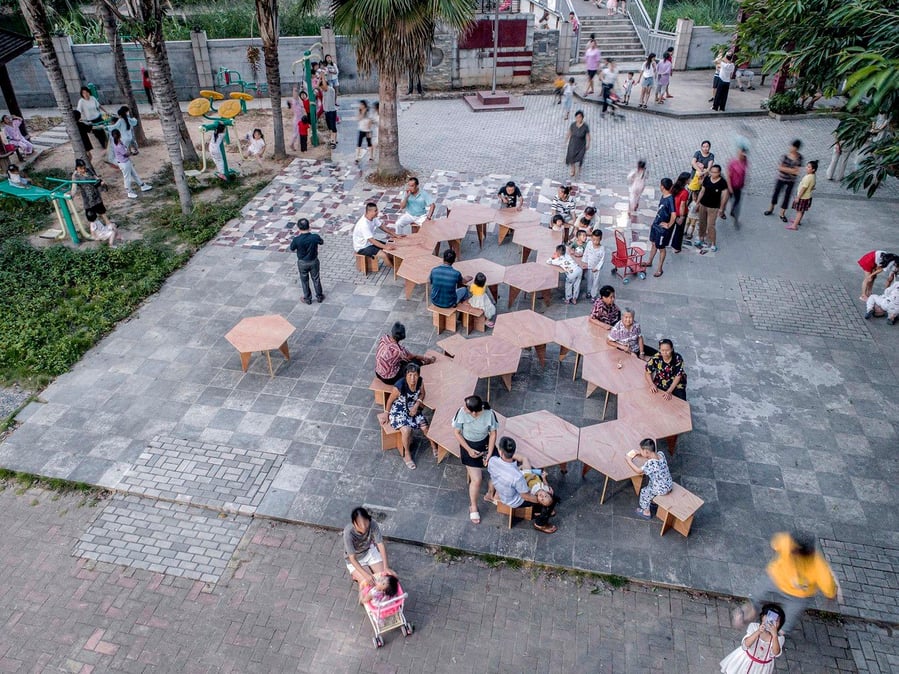This Plywood Pavilion Can Be Endlessly Recycled Into New Furniture
Erected temporarily in public places or at industry events, pavilions give architects a chance to experiment with new materials, silhouettes, and construction techniques. One could even argue that they represent architecture in its purest form, freed from the constraints of practicality and permanence. Sometimes they’re works of oversized sculpture, made to gawk at, and sometimes they’re functional, offering shelter or a platform for an exhibition. But the grander and more impressive they are, the less likely they can be efficiently recycled when the display is over.

Now, South African firm Rooi Design has created what might be the least wasteful pavilion ever made. Designed for the Shanghai International Furniture Fair 2019, “Furniture Pavilion S and its Afterlife” takes ordinary materials and shows off what they’re capable of, from their raw, uncut state to their final forms. Each plywood piece used to build the pavilion can be recycled “endlessly,” too — not just into new furniture-showcasing pavilions, but into pretty much any piece of furniture you could want.
All 821 segments of the pavilion are market standard-size (1.22 x 1.22 meter) plywood, the most efficient size for common furniture making applications. Inserted into a steel framework, they form a tall modular structure with nearly 200 open display cubes built into the walls. These openings allow a glimpse into the inside of the pavilion.


“Pavilion S is not just a furniture showroom either, it is a place where one can relax and rest during the exhibition,” say the architects. “The facade of the building uses two different cubes, and the four facades have become window-like in order to display the furniture, giving audiences different views from various angles. The furniture display can be clearly seen, and the transparent facade captures plenty of sunlight, while the 1.22-meter-deep window prevents the sun from shining directly into the showroom.”
“The main structure adopts the mixed-use of a wood and steel structure, while the roof is designed as a hyperboloid (positive and negative arch-beam steel structure roof). The whole building space does not have a column, presenting the whole exhibition hall in a clean, sleek manner. [We believe] that the complexity should be left in the design and technique of the building process while giving the audience an impression that’s clear and easy to understand, bright, and eco-friendly to the city.”




Even more impressive is what the pavilion becomes after it’s disassembled. The architects recycled the entire thing into 410 sets of tables and chairs with almost zero material waste, creating either one hexagonal table or three rectangular chairs from each piece. The tables and chairs can become their own little constellations of seating, joined together in virtually infinite configurations.

Both the end result of the furniture and the process by which it’s directly transformed have especially significant value in the rural Chinese community of Fuqing, where Rooi Design is now located. There, the furniture is set outside the Comprehensive Cultural Service Center for communal use, and the public is given the freedom to rearrange it however they like. In this way, the community gets a direct say in how their public spaces are used, and the process of putting it together makes friends out of total strangers.




